How Colors Affect Mood: Impacts of Color in Your Home
Prepared by Dani Dross | Published on March 24, 2025
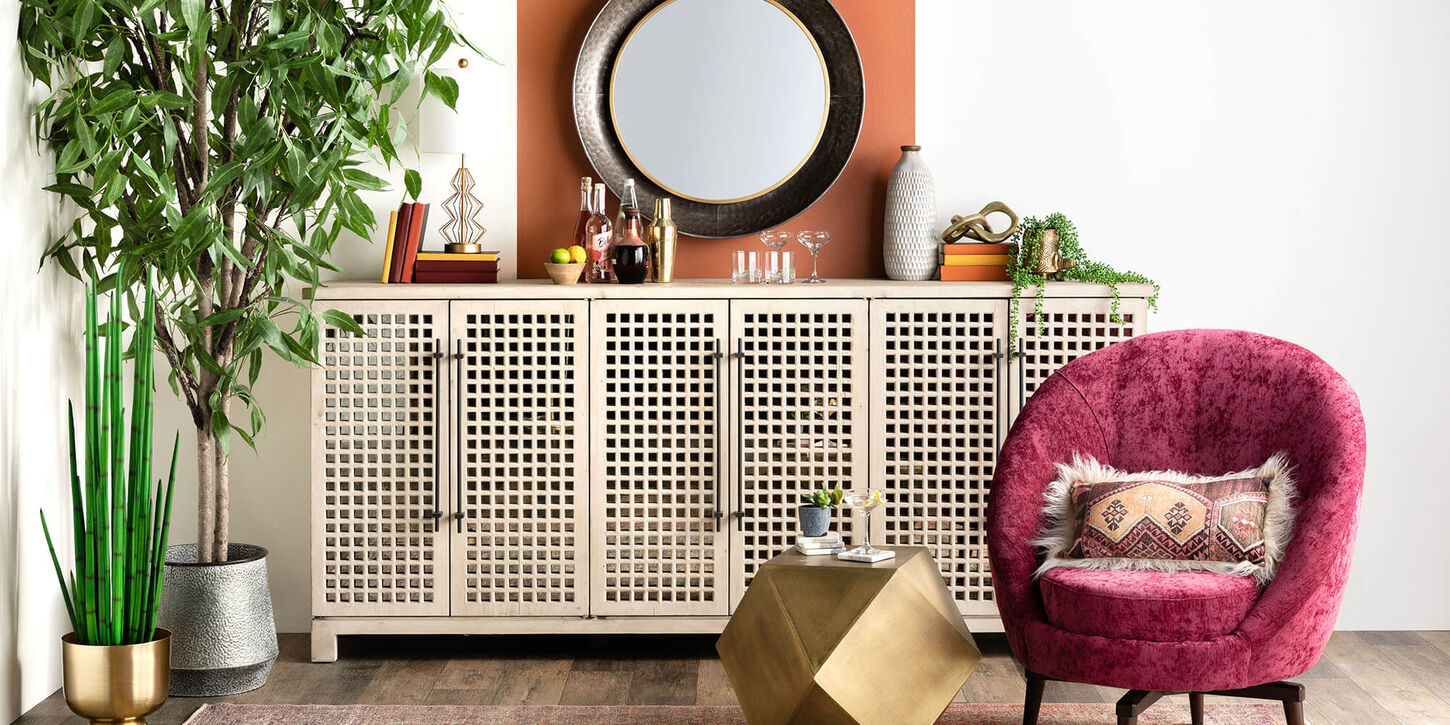
What’s your favorite color? It probably didn’t take you long to think of an answer, but what about that color makes it your favorite? What sets it apart from other colors, and how does it make you feel when you see it?
The impact of color on our emotions actually has its own area of study known as color psychology. Researchers, or color psychologists, study the link between color and mood (or how we “feel colors”), color and personality, color and gender, and other factors that influence our everyday lives. Ever heard the phrase “green with envy”? How about “seeing red,” associated with anger? These phrases didn’t just appear; they’re rooted in the relationship between emotions and colors, including the way we process color in our world.
Certain colors can be associated with specific people, events, or periods of time. For example, when we think 1970s, we may think of avocado green. In contrast, the 1980s might make us think of neon colors, bright pinks and purples. Valentine’s Day: Red and pink. Halloween: Orange and black. Christmas: Silver and gold (there’s even a whole song about it!). We are already conditioned to make color associations without even thinking about it.
This means that color has trends, too. PANTONE, the company that provided us with the PANTONE matching system, announces their “Color of the Year” to reflect the global mood of a particular time. Popular interior design trends incorporate specific colors. Different seasons demand different colors: Some of us love the greens of spring, while others prefer the oranges of fall. Color is such an integral and inescapable part of our lives that we rarely slow down to think much about it, but maybe we should!
Let’s explore a bit about how colors affect mood, and how you can integrate color in the home to benefit you the most. With some easy alterations to paint colors, home accessories or mood lighting, you’ll find you can enhance your space and your well-being.
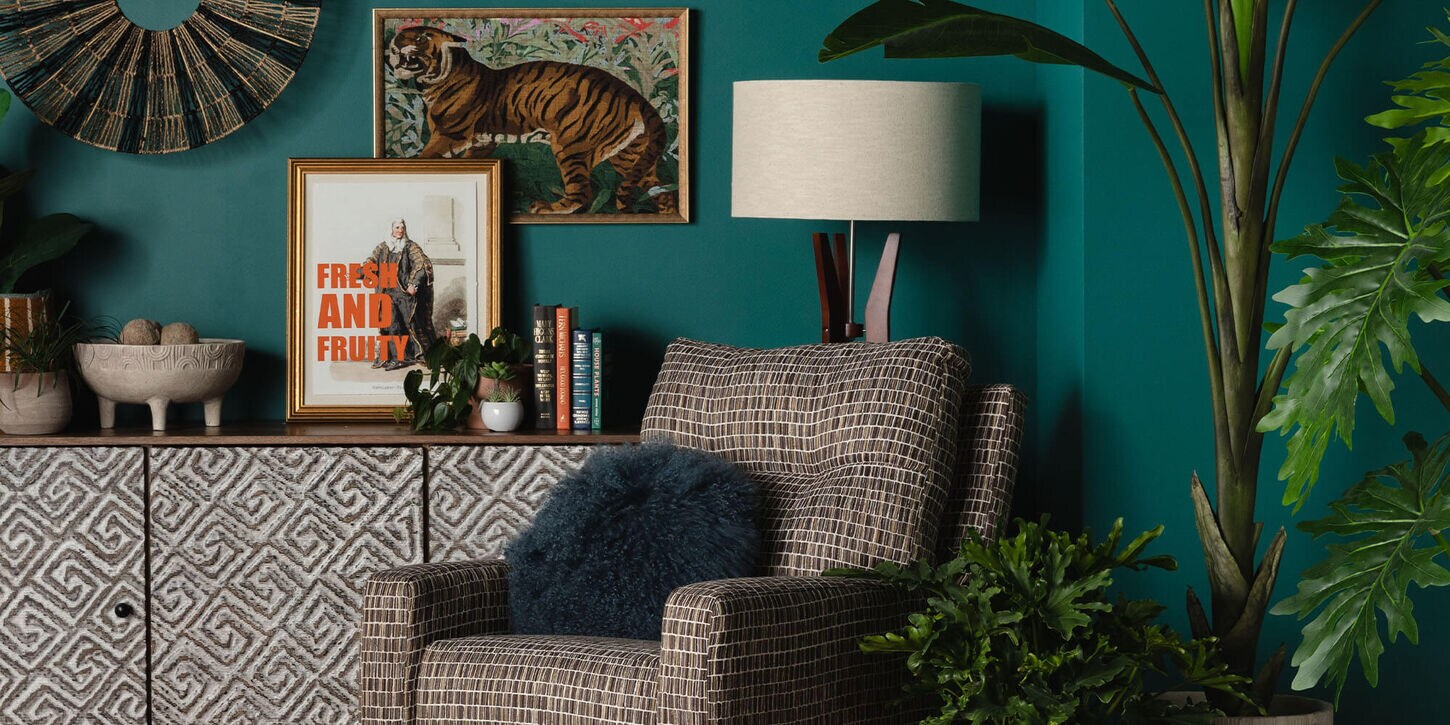
Wall Wonders
We’ll begin with the most obvious one: Your walls. When you first rent or buy a home, it’s pretty likely that your walls are either a shade of gray, white, or beige. Neutral colors offer a blank canvas. They allow anyone to picture themselves in that home. And maybe neutral is your bag! After all, neutral colors can be calming, but they can also invoke feelings of negativity. If you want to maximize your happiness, opt for a yellow, lavender, or pink hue. These colors are linked with feelings of joy. Think about the activities you do in each room too: Maybe you want a light blue on the walls of your office area, which promotes feelings of serenity, or a red in your exercise space, which is associated with motivation. Do what works best for you, and don’t be afraid to commit to a color. Painting might seem intimidating at first, but the best part is that you can always strip it down or paint over it and try again.
Want to go a little bolder? Wallpaper has been making a comeback in recent years, and it’s easier than ever to install. Pick a fun and funky pattern in a shade that really speaks to you.
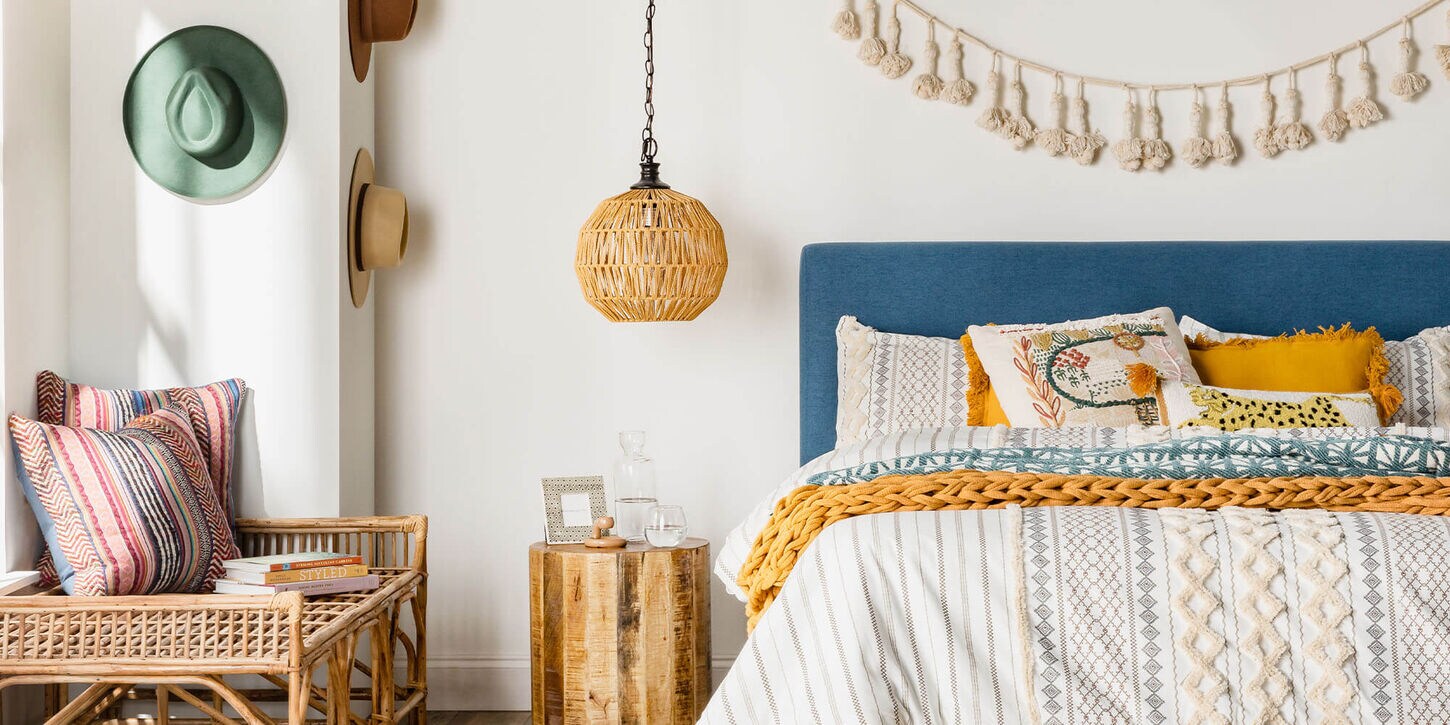
Bright Ideas
Lighting is an oft forgotten, but very important, feature in our home. Just like wall colors, lighting colors can have a huge impact on our mood. The good news is that it’s easy to incorporate ideal lighting choices. Try installing light strips in your office or living room or add one or two smart bulbs to your favorite lighting features in other living spaces. Warm lighting (like red hues) can make you feel comfortable and relaxed, whereas cool lighting (like blue hues) can make you feel motivated and alert. Options you can change on a whim, like smart bulbs, enable you to maximize your mood for whatever activity you might be doing.
For more information about lighting and how it affects your well-being, check out this previous Home Stories article.
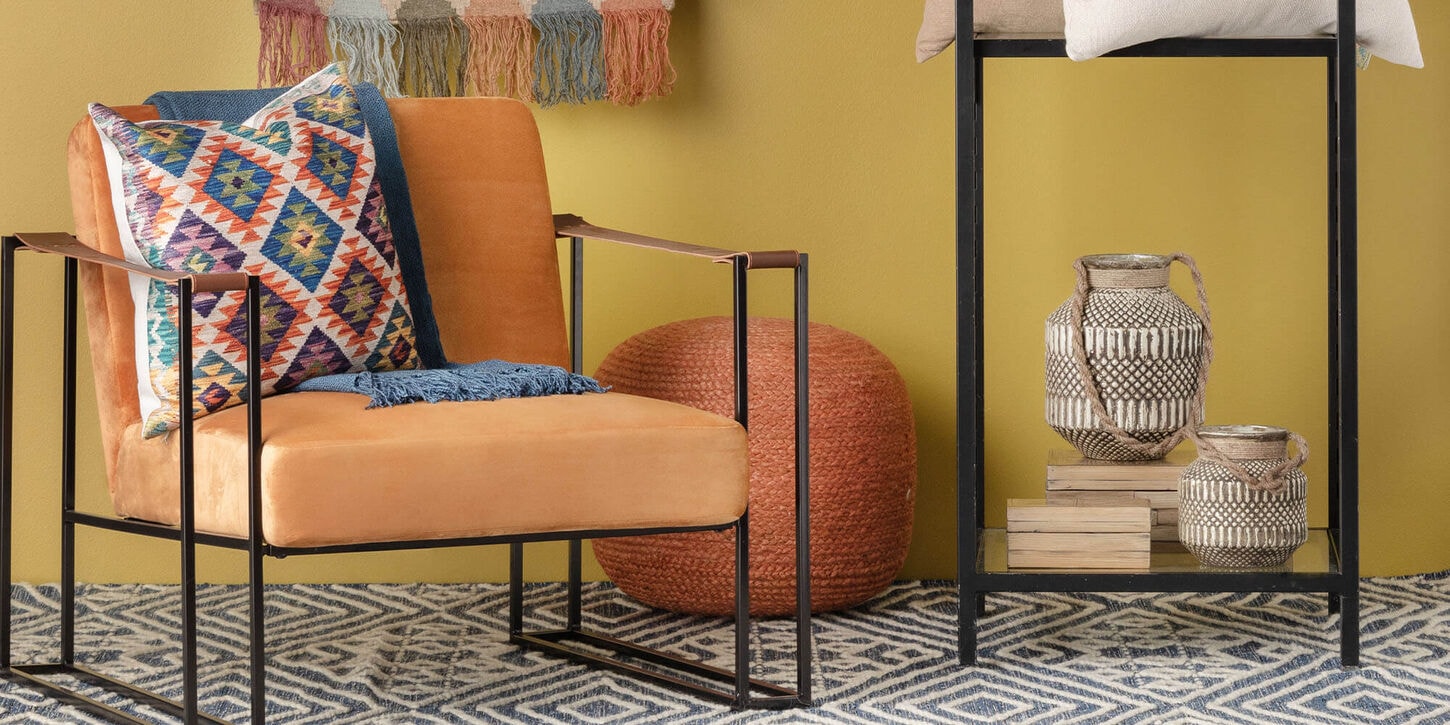
Color in the Details
Last but certainly not least, let’s talk accents: This includes furniture, area rugs, and décor. It’s likely you’ve established base colors for your walls and floors, so now it’s time to complement them. In interior design, normally a tried-and-true way to get that “wow factor” is to use one base color and two adjacent colors. Meaning, if your base color is blue, you can add accents of red-orange or yellow-orange to fill out the look. When deciding on a color scheme and determining which colors are complementary, the use of a color wheel is extremely helpful. You can easily find a color wheel online, pick your primary color, and then find the two colors that sit directly opposite. If three’s a crowd, traditional complementary color pairs include red and green; yellow and purple; and orange and blue. Once you’ve determined your colors, you can take it as far as you want. Integrating neutrals is advised, but if you want your whole room to be a beautiful rainbow, you can do that! Have some fun with it.
At the end of the day, you know what you like. Go for colors that make you feel happy and safe. And don’t be afraid to be a little bold and creative with it. You are the one living in your house every day: Make it feel like you!
Still need a bit of guidance? NFM’s website allows you to sort numerous products by color. Check out these blue area rugs. Or how about a splash of green with an accessory or two? Pick your dream color and explore.
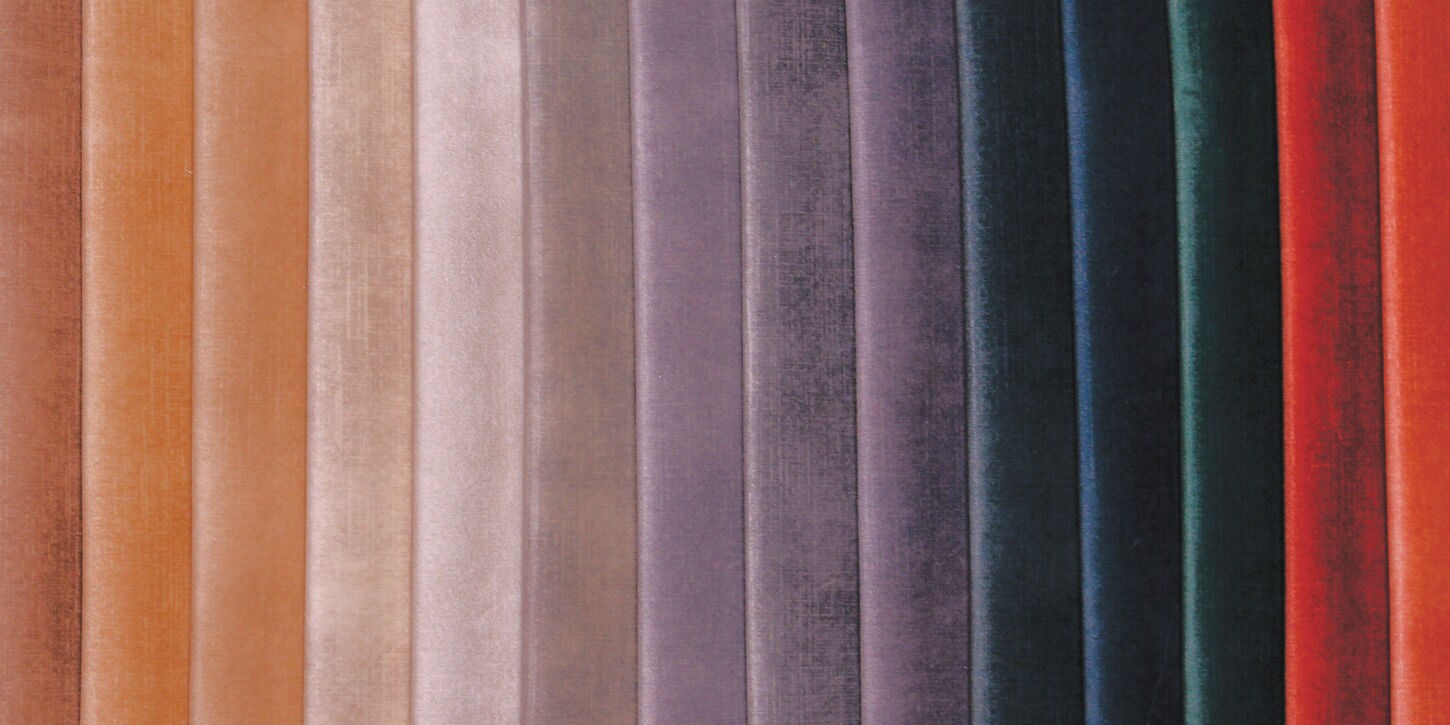
Colors & Emotions Quick Reference Guide
Red: Passion, motivation, excitement – Beware, this color can be easily overused & become overpowering!
Blue: Tranquility, stability, focus
Yellow: Happiness, optimism, creativity
Green: Balance, growth, harmony
Purple: Luxury, royalty, wisdom
Orange: Energetic, warm, whimsical – Beware, this color can be easily overused & become overpowering!
Pink: Compassion, empathy, femininity